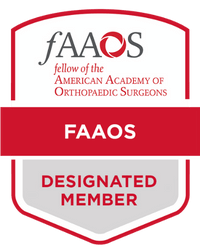Claw Toe Specialists
Have you noticed your toes flexing and curling inward? This may be due to a condition called claw toes. This condition can cause discomfort and difficulty walking in those affected. Foot and ankle specialists, Doctors Thomas Haytmanek and Jonathon Backus provide diagnosis as well as treatment for patients in Vail and Frisco, Colorado, as well as Denver, Boulder, and surrounding Summit County areas who are experiencing claw toes. Following an examination, our specialists may recommend surgery to restore your foot to a normal function. Contact The Steadman Clinic’s Sports Foot and Ankle team today!

What is Claw Toe?
A claw toe occurs when there is flexion at the joints of the toe and extension at the MTP joint. These toe deformities usually start off flexible but over time they can become rigid and lose movement. The toes begin rubbing in shoes and the limited movement can become painful. There can be several causes of this conditions including: imbalanced pull from the muscles in the foot, crowding of the toes in shoes, and some medical conditions such as neuropathy or Charcot-Marie-Tooth Disease.

What are the symptoms of claw toe?
When the toes are bent in an abnormal position they can become painful. The toes can rub in shoes that may create blisters or corns. Clawing of the toes can pull the fat pad (cushion) over the metatarsal heads distally causing widespread forefoot pain.
How do I know if I have claw toes?
Our physicians will conduct an extensive clinical examination (evaluating rigidity and angulation of the toe) as well as x-rays. These together will determine the best course of treatment for the toe deformity present.
Can claw toe be treated without Surgery?
Taping or splinting the toes can treat mild cases of toe deformity. This is used to help reduce further deformity and minimize symptoms. Toe exercises to improve strength and flexibility may also be prescribed.
Does Claw Toe Require Surgery?
For severe claw toe deformity, surgery may be needed to correct the condition. Depending on the rigidity of the deformity and angulation of the toes, the appropriate surgical procedure is selected. In some cases it necessary to lengthen or shorten tendons and/or ligaments to help improve mobility and abnormal angulation. To prevent recurrence, a fusion may also be needed to connect the bones on each side of the affected joint. The bones are typically fused with a removable wire. Most of these surgeries are considered outpatient and following physical therapy, patients are able to resume their normal activities.
What happens after claw toe surgery?
It is essential that patients follow the post-operative protocol for recovery set forth by our team as it remains a crucial part of the healing process. Depending on the specific procedures performed, patients can typically heel weight bear in a hard sole (postoperative) shoe almost immediately. An assistive device such as crutches are usually needed for the first few days to weeks. Dressing are placed over the forefoot and this will be changed by our team the first postoperative clinic visit. It is important to keep the foot dry when showering while the wound is healing.
